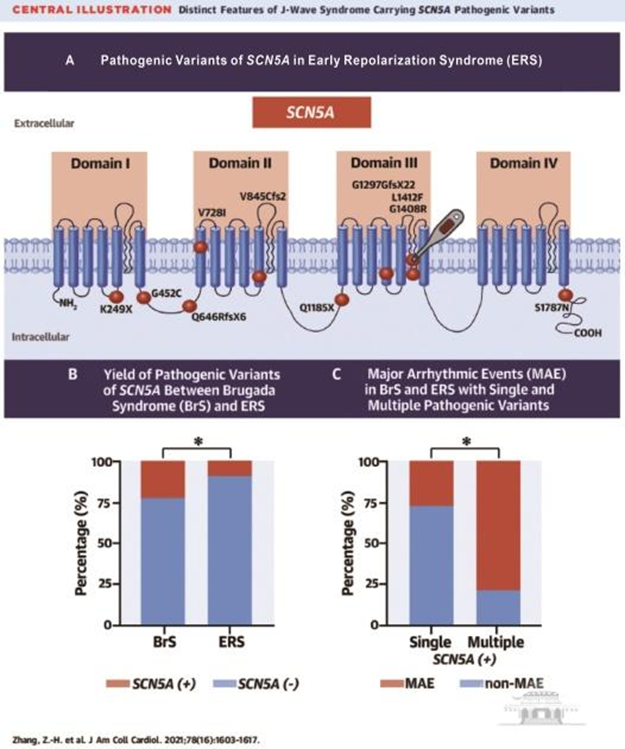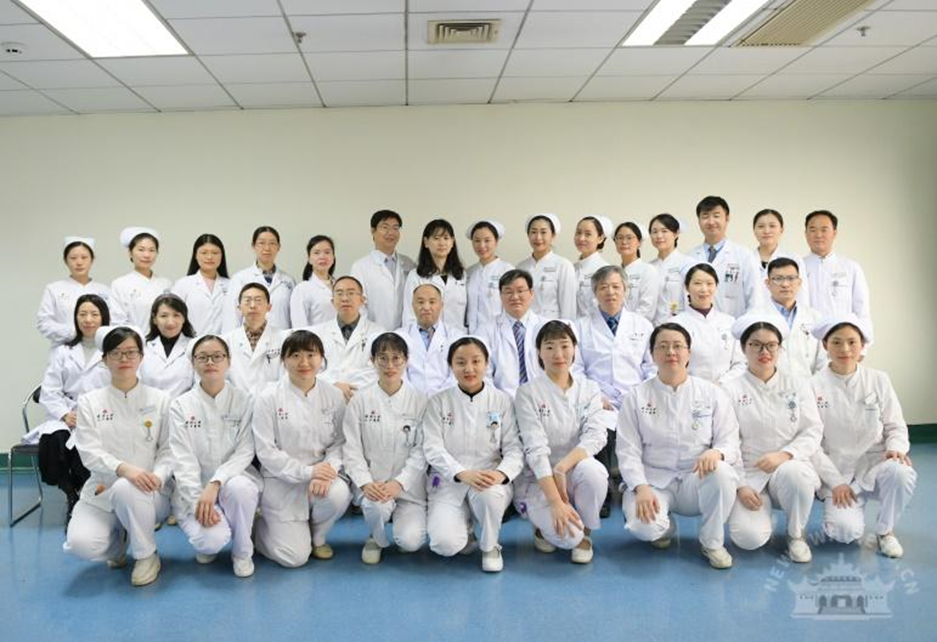On October 19, the Journal of the American College of Cardiology (JACC, IF=24.1), a top international journal in the cardiovascular field, published online the latest research findings of Professor Hu Dan’s research group (Department of Cardiovascular Medicine, Renmin Hospital of Wuhan University) on arrhythmia. According to this research, SCN5A, encoding the cardiac sodium channel, is a major susceptibility gene in early repolarization syndrome (ERS) which can cause sudden cardiac death (SCD). The success of the research is of great clinical significance in the early detection and prevention of SCD caused by ERS.
The paper is entitled Distinct Features of Probands With Early Repolarization and Brugada Syndromes Carrying SCN5A Pathogenic Variants, with Zhang Zhonghe, a master student from the Department of Cardiovascular Medicine, Renmin Hospital of Wuhan University and Professor Hector Barajas-Martinez from the Lankenau Institute for Medical Research (LIMR) as the co-first authors, Professor Hu Dan as the single corresponding author, and Renmin Hospital of Wuhan University as the first corresponding institution. This paper received support from the National Natural Science Foundation of China (NSFC).

Central illustration. Distinct features of J-wave syndrome carrying SCN5A pathogenic variants

Professor Hu Dan making the ward rounds

Co-first author Zhang Zhonghe
SCDs account for more than 80% of sudden deaths. It is estimated that 544,000 people die from SCD every year in China, with less than 1% surviving. According to Prof. Hu, recognized by a J-wave during an electrocardiogram, the J-wave syndrome (JWS) is a clinical syndrome of combined fatal arrhythmia. JWS is highly related to SCD. People displaying J-waves are three to ten times more likely to suffer SCDs than those who do not, and those who experience SCDs are three to twenty times more likely to display J-waves than those among the healthy population.
J-wave syndromes (JWSs) consist of the Brugada syndrome (BrS) and early repolarization syndrome (ERS), the first clinical manifestation of which is sudden death, posing serious threats to people’s lives. The global morbidity rate of BrS is about 1/5000-1/2000, equivalent to 4% to 12% of all sudden deaths and 20% of sudden deaths with normal cardiac structure. The prevalence rate of early repolarization electrocardiogram is 1% to 13%. Though the morbidity rate and genetic basis of ERS remain unclear, there is no doubt that it increases the risk of sudden death.
During the research on SCDs, Hu Dan’s team firstly discovered that SCN5A, which encodes cardiac sodium channels, is a major pathogenic gene in ERS. The research also demonstrates that the prevalence of pathogenic variants in SCN5A in ERS is remarkably lower than in BrS and that JWS patients with multiple pathogenic variants in SCN5A display longer PR intervals and QRS durations. What is more important is that patients with multiple pathogenic SCN5A variants experience more major arrhythmia events (MAE) than those with single pathogenic variants.
The above findings provide a new way to the early and precise clinical detection of SCD, making it possible to change relevant clinical guidelines and decision making in diagnosis and treatment. Prof. Hu said that through the screening of SCN5A genes in patients, cardiovascular physicians could proactively and effectively identify high-risk patients of ERS, so as to prevent and treat SCD caused by ERS more effectively.

Prof. Jiang Hong and group of Department II of Cardiovascular Medicine in Renmin Hospital of Wuhan University
Prof. Jiang Hong and his research group have committed themselves to frontier research on cardiovascular diseases. Prof. Hu Dan and her team, part of Prof. Jiang’s group, have published over 130 papers and reviews on the pathologic mechanisms of cardiomyopathy and arrhythmia, cancer cardiology and cardiovascular drug development. One of Hu’s students has also won the third prize of the Young Investigators Award of Cardiovascular Research on HRS 2021.
Rewritten by Shen Le
Edited by: Cao Mi
Link to the paper:
https://www.sciencedirect.com/science/article/pii/S0735109721060083?dgcid=author